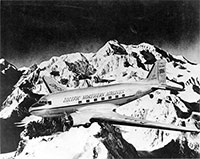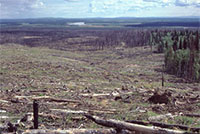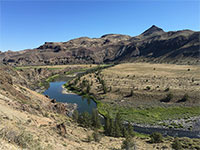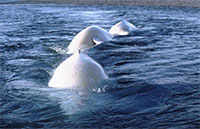

















 Contact Contact 
 Webmail
Letters Webmail
Letters
 News Tips News Tips
 Copyright Info Copyright Info
 Archives Archives
Quick News
Search
 Alaska Alaska
 Ketchikan Ketchikan
 SE Alaska SE Alaska
Columns
- Articles
 Dave Kiffer Dave Kiffer
 Money Matters Money Matters
Historical
Ketchikan
 June Allen June Allen
 Dave
Kiffer Dave
Kiffer
 Louise
B. Harrington Louise
B. Harrington
Ketchikan
Arts & Events
 Ketchikan
Arts Ketchikan
Arts
 Ketchikan
Museums Ketchikan
Museums
 KTN Public
Library KTN Public
Library
Sports
 Ketchikan Links Ketchikan Links
Public Records
 FAA Accident Reports FAA Accident Reports
 NTSB
Accident Reports NTSB
Accident Reports
 Court Calendar Court Calendar
 Recent Filings & Case Dispositions Recent Filings & Case Dispositions
 Court Records Search Court Records Search
 Wanted:
Absconders Wanted:
Absconders
 Sex Offender Reg. Sex Offender Reg.
 Public Notices Public Notices
 AST Daily Dispatch AST Daily Dispatch
 KTN
Police Reports KTN
Police Reports
 Juneau Police Reports Juneau Police Reports
Weather,
Webcams
 Today's
Forecast Today's
Forecast
 KTN
Weather Data KTN
Weather Data
 AK
Weather Map AK
Weather Map
 AK Weathercams AK Weathercams
 AK Earthquakes AK Earthquakes
TV Guide
 Ketchikan Ketchikan
Ketchikan
Phone Book
 Yellow
Pages Yellow
Pages
 White
Pages White
Pages
Government
Links
 Local Government Local Government
 State & National State & National

|
|

Wednesday
September 13, 2017

|
Double Rainbow
It was a rainy day with sun peeking out now and then in downtown Ketchikan on Monday providing a great opportunity to capture a double rainbow. In the background is the Federal Building and Deer Mountain. Whale Park is on the left.
Front Page Feature Photo By RACHELLE LYNN SPEIGHTS ©2017
Borough Election
OCTOBER 03, 2017
This is the 15th year, Sitnews has provided FREE web exposure to all local Ketchikan candidates to provide information for consideration by voters.
Tell your possible future constituents about your background, qualifications for the position, etc. Please send a photo. Links to your social media page accepted: Email to editor@sitnews.us
Respond By: 09/26/17
The sooner the better; absentee voters may vote as early as 15 days prior to the Borough election.
Ketchikan Borough Assembly
3 Year Term - 3 Seats Open
Ketchikan School Board
3 Year Term - 2 Seats Open
Ketchikan School Board
1 Year Term - 1 Seat Open
 |
Bill Blankenship
Filed 08/21/17
|
 |
Glenn J. Brown
Filed 08/25/17 |
Ketchikan City Council
3 Year Term - 3 Seats Open
Online Voter Registration
KGB Election Information
City of Ketchikan Election Info.
|
|
Ketchikan: 'The 'Alaska Flag Line' served Ketchikan for two decades; Pacific Northern Airlines was a primary carrier for Southeast Alaska By DAVE KIFFER - It may seem like Alaska Airlines has been Ketchikan's main air connection to the rest of the world forever. But a little more than half a century ago, Alaska Airlines barely served the First City. The primary airlines that brought passengers to the Annette airport were Pan Am and Pacific Northern Airlines.

Northern Pacific Airlines DC-3 NC28380 in flight across Mt. Fairweather
Oliver Middaugh Photograph Collection
Courtesy Alaska State Library - Historical Collections |
Pan Am had been making flights to Alaska since the early 1930s and first serviced the Ketchikan area with Sikorsky Flying Boats in 1938 (See "Pan Am: Once Ketchikan's Link to the Outside World" SITNEWS, Dec. 29, 2006).
Pacific Northern Airlines, which originally was founded as Woodley Airways in 1932, had been flying into Ketchikan since the early 1950s.
Founded by Arthur G. Woodley, the company claimed to have started the first "scheduled" Alaskan air service in 1932. It was also awarded the lucrative federal mail contract for much of south central Alaska and Bristol Bay in the early 1930s.
Woodley was one of the pioneers of Alaskan aviation and a first class "character," at least according to aviation historian Robert Serling, who wrote many aviation history books including the official history of Alaska Airlines, called "Characters and Character." He wrote about Woodley as part of his 1978 history of Western Airlines, "The Only Way to Fly."
"The President of Pacific Northern Airlines was Arthur G. Woodley - a man of iron will, unimpeachable integrity, awesome profanity, a streak of sentimentality the approximate depth of Carlsbad Caverns, the liquor capacity of a 747 wing tank and a hair trigger temper," Serling wrote in 1978.
Woodley was known to fire employees and immediately hire them back. He refused to suffer fools and rarely brooked any dissention from the rank and file, although he was generally liked by his employees. He carried on decades-long feuds with the leaders of other airlines and firmly believed that anyone who "wasn't with us, was against us," Serling wrote.
"His personal idiosyncrasies had to be forgiven if not forgotten in light of what he accomplished for an airline that literally grew up with the area it served so well," Serling wrote. "PNA was the first Alaska carrier to develop its own communications system, the first to operate multi-engine aircraft, the first to utilize instrument flight procedures."
Like many early Alaskan entrepreneurs, Woodley extend credit to drum up business, according to his March 31, 1990 obituary in the New York Times.
"He extended credit to his passengers until the end of each trapping season.," the Times reported. "In 1935 he estimated that he was owed $300,000, but all of it was eventually paid."
Woodley was a New Englander and learned to fly after World War I. He first came to Alaska in 1928 to visit his brother, a priest in Anchorage. In 1931, Woodley's brother died in a hunting accident and Woodley came back to the funeral.
"After the funeral, Woodley just stayed in Anchorage," Serling wrote. "He had flown a five-passenger Bellanca there all the way from New York, landing with one cup of gas in the tank, and this was the plane he used to launch Woodley Airways out of Anchorage (a place) with only 2,500 hundred inhabitants. Woodley Airways fitted nicely with the minuteness of its base. It consisted of President Woodley, pilot Woodley, mechanic Woodley and salesman Woodley, a one man airline with one airplane."
Woodley began as a charter service, flying passengers and freight anywhere in the state. He made some of the first flights to places such as Nome for fees up to $150, which were significantly cheaper - and quicker - than the $750, month-long sled dog trips. The Bellanca could make it from Anchorage to Nome in 5 1/2 hours, according to Serling. - More...
Wednesday PM - September 13, 2017
Ketchikan - Statewide: Performance Evaluation Results Released for Alaska Schools - Statewide, district, school, and subgroup level results from the Performance Evaluation for Alaska’s Schools (PEAKS) assessment are now available online. The assessment provides information to parents, educators, policy makers, communities, and businesses about how Alaska’s schools and districts are performing. School districts have until September 29 to distribute student-level reports to parents and teachers.
PEAKS is Alaska’s new statewide summative assessment, and was first administered to students in grades three to ten in spring 2017. In spring 2017, approximately 70,600 students participated in the first administration of PEAKS. Nearly three quarters of all students taking the assessment took the computer-based version.
PEAKS is not a pass/fail assessment. Students score on a scale that is divided into four levels of achievement: advanced, proficient, below proficient, and far below proficient.
Statewide, results varied from grade to grade. In English language arts, approximately 32 percent to 45 percent of students statewide were proficient on the assessment. In mathematics, approximately 15 percent to 45 percent of students statewide were proficient on the assessment. In Ketchikan, results also varied from school to school and grade to grade. Full reports for all Ketchikan schools are available on links provided below.
“We must be dissatisfied with these results, and yet, we have even more opportunity now than ever before to support student learning,” said Alaska Education Commissioner Dr. Michael Johnson. “Many schools are already implementing positive changes that will provide students more opportunity to increase their learning.”
Results released earlier this month by the Alaska Department of Education form a new baseline from which to measure growth in achievement in English language arts and mathematics. Results from PEAKS are not comparable to Alaska’s former assessments because the scale used to provide scores and achievement levels to students is very different than scales used on previous assessments.
PEAKS is not a high-stakes assessment for students. Results do not affect classroom grades, grade advancement, or graduation. The statewide assessment is just one important piece of a balanced assessment system.
Alaska educators have been involved in determining student performance criteria on the PEAKS assessment. A group of 35 Alaska educators gathered in April to decide how much students should know and be able to do at each achievement level. In early June, 84 Alaska educators gathered to determine the range of scores for each of the four achievement levels. - More...
Wednesday PM - September 13, 2017 |
Alaska: Forest regeneration experiment of 30 years yields results By DEBBIE CARTER- A spruce forest regeneration experiment in Interior Alaska that spanned nearly 30 years demonstrates which forest management practices produce the best results.

Looking southeast, this photo shows part of regeneration treatment research area in the Bonanza Creek Experimental Forest in 1986, one year after the treatment and three years after the area was burned in the Rosie Creek Fire.
Photo by Roseann Densmore |
The experiment, launched by three Fairbanks scientists, looked at different combinations of ground treatments to reduce competition from other vegetation. It also tested regeneration methods, such as planting spruce seedlings and broadcast seeding.
The results, published Aug. 19 in the journal Forest Ecology and Management, showed that planting white spruce seedlings is the best way to produce a spruce-dominated stand after 28 years. Broadcast seeding was the next most effective method. The two options were the most expensive among those tested.
University of Alaska Fairbanks forest ecologist Glenn Juday, who helped establish the experiment in the mid-1980s and is a co-author of the paper, said the research shows the environmental and management situations in which different techniques work best and the situations in which they are unnecessary or even counterproductive.
Juday was a young professor in 1983 when fire swept through the Tanana Valley State Forest southwest of Fairbanks, burning 8,600 acres. The Rosie Creek Fire, whipped by wind, burned into a section of the forest known as the Bonanza Creek Experimental Forest.
Juday and two other scientists, John Zasada and Roseann Densmore, realized the fire provided a perfect setting for a forest regeneration experiment. They wanted to test which methods worked best to establish white spruce.
White spruce is the Interior’s most valuable commercial species but also the most difficult to re-establish, said Juday. Other species, such as birch, establish or resprout readily, grow faster and compete with spruce.
“Regenerating white spruce is our biggest challenge,” he said. - More....
Wednesday PM - September 13, 2017
|
|
Fisheries: Researchers say climate change challenges the survival of fish across the world - Climate change will force many amphibians, mammals and birds to move to cooler areas outside their normal ranges, provided they can find space and a clear trajectory among our urban developments and growing cities.

Fish species in many river systems, including the John Day River pictured, will face the challenge of coping with warmer waters in the future.
Credit: University of Washington |
But what are the chances for fish to survive as climate change continues to warm waters around the world?
University of Washington researchers are tackling this question in the first analysis of how vulnerable the world's freshwater and marine fishes are to climate change. Their paper, appearing online Sept. 11 in Nature Climate Change, used physiological data to predict how nearly 3,000 fish species living in oceans and rivers will respond to warming water temperatures in different regions.
"Climate change is happening. We need tools to try to identify areas that are going to be the most at risk and try to develop plans to conserve these areas," said lead author Lise Comte, a postdoctoral researcher in the UW's School of Aquatic and Fishery Sciences. "It's important to look at the organisms themselves as we cannot just assume they will all be equally sensitive to these changes."
The researchers compiled data from lab experiments involving nearly 500 fish species, conducted over the past 80 years by researchers around the world. These standardized experiments measure the highest temperatures fish are able to tolerate before they die. This analysis is the first time these disparate data from lab experiments have been combined and translated to predict how fish will respond in the wild.
The researchers found that overall, sensitivity to temperature changes varied greatly between ocean-dwelling and freshwater fish. In general, marine fish in the tropics and freshwater fish in higher latitudes of the Northern Hemisphere were the most at risk when water temperatures warmed, the analysis showed.
"Nowhere on Earth are fish spared from having to cope with climate change," said senior author Julian Olden, a UW professor of aquatic and fishery sciences. "Fish have unique challenges - they either have to make rapid movements to track their temperature requirements, or they will be forced to adapt quickly." - More...
Wednesday PM - September 13, 2017
|
|
Alaska: Project to investigate beluga whales’ failure to rebound By LAUREN FRISCH - A new collaborative research project will investigate potential factors that have caused the Cook Inlet beluga whale population to remain in severe decline since the 1990s.

Beluga whales
Photo courtesy ADF&G |
Beluga whales were once common throughout inlet waters, historically numbering around 1,300. Unmanaged subsistence hunting in the mid-1990s led to a nearly 50 percent population decline. Today, despite conservation efforts, only about 340 Cook Inlet belugas remain.
A moratorium on the subsistence harvest of Cook Inlet belugas was established in 1999. The whales were listed as endangered under the Endangered Species Act in 2008, and critical habitat was designated in 2011. But Cook Inlet belugas have not recovered, and the reasons remain unknown.
To better understand why the belugas have not rebounded, University of Alaska Fairbanks researchers Mat Wooller and Mark Nelson will measure stable strontium, carbon and nitrogen isotopes in beluga whale teeth to determine how feeding patterns may be changing over time. This information will help determine if changes in foraging ecology and habitat are affecting the ability of beluga whales to recover from the population decline.
“Like tree rings, teeth have annual growth layers,” said Wooller, a professor at UAF’s College of Fisheries and Ocean Sciences and Water and Environmental Research Center. “Measuring isotopes in these growth layers can reveal how whales’ feeding habits have changed over the life of an animal. By stacking records from many individuals sampled over time to create a long record of beluga behavior, we can create a long record of beluga behavior.” - More...
Wednesday PM - September 13, 2017
|
 |
TOM PURCELL: Desperate for Tax Reform that Simplifies - "Help!" said the fellow, surrounded by a pile of papers. "I don't think I'm going to make it through this 1040 tax form."
"Why is that?" I said.
"The 2016 tax extension I filed is due by Oct. 15. But it is so complicated, I don't see how I can possibly figure it."
"Millions feel your pain," I said. "According to Forbes, the basic 1040 form was two simple pages in 1935. Now the basic 1040 form has 100 pages of instructions that are very complex. Maybe you can contact the Internal Revenue Service for help."
"Ha!" he said. "The tax code has gotten so complicated that even the IRS can't get a handle on it. Every year, some group has 10 people call 10 IRS representatives with the same questions, and they frequently get several different answers."
"That's no good."
"Did you know that in 1913, when the income tax was introduced in America, it was only 1 percent, and only the very wealthy paid it?"
"I did not."
"Well, taxes have a tendency to go one way and that is up," he said. "During our wars, tax rates shot way up to pay for the war efforts and nobody complained, but the tax rates tended to stay high after the wars."
"Well, we did a lot of things in America after the Second World War," I said. "We built up our infrastructure, made money available for college and houses through the GI Bill and invested billions in social programs. These things cost dough."
"Sure, that is well and good and these programs helped millions, but even as taxes increased, it wasn't until recent years that completing a stupid tax form got so difficult."
"Please explain."
"It's been 30 years since President Reagan ushered in tax simplification. At that time, multiple loopholes and deductions were eliminated in return for lower rates. In the late '80s, completing a 1040 was a piece of cake."
"OK."
"But over the years, Congress kept meddling with the tax code. Sometimes it was to pass targeted cuts for individuals and small businesses, which many welcomed. Other times it was to insert loopholes to pay back donors. The result is an incredible tax complexity that is hurting everyone." - More...
Wednesday PM - September 13, 2017
|

Editorial Cartoon: 20 Trillion Debt
By Nate Beeler ©2017, The Columbus Dispatch
Distributed to subscribers for publication by Cagle Cartoons, Inc.
Beware! USPS Will Not Go Up Hills! By Megan Heaton - We live at 5109 Surprise Beach Court, and like many of the property owners out in this area, we have been developing and building on our property.
There are several areas of growth that have happened in the South Tongass Area, such as the Gold Nugget Subdivision, Homestead Development, Seawatch Subdivision, Ravenwood Subdivision, Rainforest Sanctuary, Forest Park Subdivision and Surprise Beach Court.
Our quest for mail service started over two years ago. We requested, at our expense a "cluster box" to be positioned up by the four plex buildings and residential homes. Our main reason was a safety issue. - More...
Wednesday PM - September 13, 2017
Anti-this, anti-that By A. M. Johnson - With all the news reflecting 'Anti-this' and 'Anti-that' one becomes confused as to which category one fits. On one side is the world s most successful hate group. Democrats. This organization attracts poor people who hate rich people, black folk who hate white folk, gay people who hate straight people, feminists who hate men, environmentalist who hate the internal combustion engine and a whole lot of bratty college kids who hate their parents.
From news reporting videos, one draws a conclusion. When half of the people get the idea that they do not have to work (March about with signs instead) because the other half they despise is going to take care of them. We [the workers] figure this out that somebody else is going to get what we work for, that will be the beginning of the end of the country. - More...
Wednesday PM - September 13, 2017
Mr. President, Don’t Settle for FAKE Tax Reform By Wiley Brooks - Mr. President, there is already a bill in Congress that meets your four principles for tax reform. Have Congress get it out of committee and send it over to your desk.
In Springfield, Missouri you first called for a tax code that is simple, fair, and easy to understand. The FAIRtax, HR25, S18, is simple and easy to understand because taxpayers “do their taxes” at the cash register. There is nothing to do on April 15. The FAIRtax is fair because it provides a refund from the Social Security Administration (there is no more IRS) to every US household with lawful residents. This refund reimburses that household for tax the household pays on essentials. - More...
Wednesday PM - September 13, 2017
Japanese Military Build Up By Donald Moskowitz - As a counterweight to China and North Korea we should encourage Japan to build up its military capabilities.
Japan should increase its frontline military personnel from 250,000 to 350,000 and increase the number of tanks from 700 to 1000 and armored vehicles from 3000 to 4000. - More...
Wednesday PM - September 13, 2017
New beverage container excise tax By Deborah Hayden - At next Tuesday’s, September 5, Assembly meeting, the Assembly will consider an ordinance establishing a beverage container excise tax. The ordinance dedicates revenue from this tax, up to $450,000, for funding nonprofits.
Any additional revenue above $450,000 from this tax, up to $750,000, will replenish the economic development fund. Revenue above $750,000 will flow into the education fund. - More...
Monday PM - September 04, 2017
Substance Abuse Prevention By Christine Furey - Good morning Ketchikan. I would like to start by saying that I suppose that I am just as much to blame as anyone else that is involved with any one of the task forces, Coalitions or agencies in our community but I am incredibly concerned about a few things. - More...
Monday PM - September 04, 2017
 Webmail your letter or Webmail your letter or
 Email Your Letter To: editor@sitnews.us Email Your Letter To: editor@sitnews.us
|
Articles &
photographs that appear in SitNews may be protected by copyright
and may not be reprinted or redistributed without written permission
from and payment of required fees to the proper sources.
E-mail your news &
photos to editor@sitnews.us
Photographers choosing to submit photographs for publication to SitNews are in doing so, granting their permission for publication and for archiving. SitNews does not sell photographs. All requests for purchasing a photograph will be emailed to the photographer.
|
|







 Weekly Specials
Weekly Specials
Online Shopping; Pickup or Delivery |








The Local Paper is
available online.
Click here for this week's printed edition (PDF)


|
|
|
![]() Contact
Contact ![]()
![]() Webmail
Letters
Webmail
Letters![]()
![]() News Tips
News Tips![]()
![]() Copyright Info
Copyright Info![]() Archives
Archives![]() Alaska
Alaska![]() Ketchikan
Ketchikan![]() SE Alaska
SE Alaska![]() Dave Kiffer
Dave Kiffer![]() Money Matters
Money Matters ![]() June Allen
June Allen![]() Dave
Kiffer
Dave
Kiffer![]() Louise
B. Harrington
Louise
B. Harrington![]() Ketchikan
Arts
Ketchikan
Arts![]() Ketchikan
Museums
Ketchikan
Museums![]() KTN Public
Library
KTN Public
Library![]() Ketchikan Links
Ketchikan Links![]() FAA Accident Reports
FAA Accident Reports ![]() NTSB
Accident Reports
NTSB
Accident Reports![]() Court Calendar
Court Calendar![]() Recent Filings & Case Dispositions
Recent Filings & Case Dispositions ![]() Court Records Search
Court Records Search![]() Wanted:
Absconders
Wanted:
Absconders![]() Sex Offender Reg.
Sex Offender Reg.![]() Public Notices
Public Notices![]() AST Daily Dispatch
AST Daily Dispatch![]() KTN
Police Reports
KTN
Police Reports![]() Juneau Police Reports
Juneau Police Reports ![]() Today's
Forecast
Today's
Forecast![]() KTN
Weather Data
KTN
Weather Data![]() AK
Weather Map
AK
Weather Map![]() AK Weathercams
AK Weathercams![]() AK Earthquakes
AK Earthquakes![]() Ketchikan
Ketchikan![]() Yellow
Pages
Yellow
Pages![]() White
Pages
White
Pages![]() Local Government
Local Government![]() State & National
State & National



























































